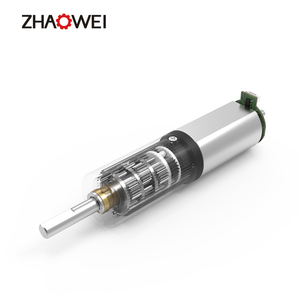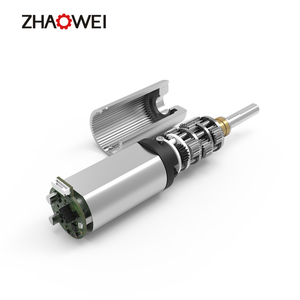
All categories
Featured selections
Trade Assurance
Buyer Central
Help Center
Get the app
Become a supplier

(834 products available)


















































The micromotor strong 210 Saeshin is a dental handpiece used for various procedures, including tooth preparation, cavity filling, and root canal treatment. It consists of a small, lightweight motor unit that can be mounted in different positions on the dental chair, and a disposable or re-sterilizable attachment that fits into the motor and performs specific tasks, such as drilling, scaling, or polishing. The device is powered by a micromotor that generates high-speed rotations or oscillations of the attachment.
There are two main types of micromotor strong 210 Saeshin units:
Other types of micromotor strong 210 Saeshin units include:
Type of Usage
The type of work determines the choice of handpiece. For precise, detailed work, a standard handpiece is suitable. If the work involves a lot of detail or requires more power, upgrading to a stronger handpiece may be needed.
Upgrading to a stronger handpiece may be required for work involving acrylics or gel applications, as a more powerful handpiece ensures smooth filing and shaping.
Acrylic or gel applications may require a handpiece with a low-speed, high-torque motor to work efficiently.
Ergonomics
Consider the weight and shape of the handpiece, as well as how comfortable it will be to hold for long periods of time. An ergonomic handpiece can make a difference in comfort and efficiency during the procedure.
Power and Speed Settings
Look for a micromotor with adjustable power and speed settings that suit the type of work. If the work involves different materials, choose a micromotor that can handle them. Having a micromotor with varying speed and torque settings is important because it allows for more precise and efficient work.
Noise, Vibration, and Heat
Consider the noise level, vibration, and heat generated by the micromotor, as these factors can affect the comfort of the client and the quality of work. A micromotor that operates quietly, produces less vibration, and generates minimal heat is more comfortable for both the technician and the client.
Budget
Micromotor prices vary, so consider the budget. Keep in mind that investing in a quality micromotor can improve the efficiency and outcome of the work. Consider the cost of replacement bits and accessories needed for the micromotor, as they can add to the overall expense of maintaining the equipment.
Brand reputation and customer support
Consider the brand reputation and customer support, as these factors can affect the level of satisfaction and trust in the product. Look for a brand that offers good warranty coverage and has a reputation for quality and reliability.
High Speed and Torque
The micromotor can reach high speeds (up to around 40,000 RPM) with great torque. This is excellent for nail technicians and dental professionals who need a strong, fast drill. It is also suitable for handpiece attachments that can do the work quickly and efficiently.
Forward/Reverse Rotation
The micromotor allows the forward or reverse rotation, making it suitable for use in different settings and directions. This is also helpful for technicians who prefer to work in reverse sometimes when filing nails or working on specific areas.
Powerful and Quiet
The strong 210 micromotor has a powerful output that can handle tough tasks without overpowering the work area. This is convenient for technicians who work in quiet places because they will not disturb people with the machine's noise.
Lightweight Handpiece
The handpiece of the micromotor is light and ergonomic, making it comfortable to use for long hours without feeling heavy or strained. This is handy for nail technicians who work for a long time because the handpiece feels light in their hands and is comfortable to use.
Digital Display
It has a digital display that shows the speed setting and direction of rotation, which helps users monitor and adjust the performance of the micromotor accordingly. This is suitable for technicians who prefer digital readouts because they can see the speed and direction of the micromotor clearly and adjust it accordingly.
Multiple Speed Settings
The micromotor has multiple speed settings that can be increased or decreased by a button or dial. This is suitable for users who prefer to work on different speed levels because they can increase or decrease the speed according to their needs.
Interchangeable Attachments
Interchangeable attachments can file, polish, clean, or prepare teeth for procedure micromotor work. This feature is suitable for dental professionals who prefer to use one micromotor for various procedures because it can accommodate all their needs.
Easy Maintenance
Easy maintenance of the micromotor requires little to no maintenance, making it an ideal choice for users who need a reliable and long-lasting micromotor. This is suitable for users who need to maintain the device easily because they won't have to take it to the technician for maintenance.
Compact and Portable
The compact and portable design makes the micromotor easy to carry, making it suitable for technicians or dental professionals working in two different locations. This is convenient for users who work in two different locations because the micromotor can be stored in a travel case and carried easily.
Durable Construction
Durable construction micromotor is made of quality materials built to last. This is convenient for users who need a durable and long-lasting micromotor that can withstand daily use without breaking down easily.
Q1: What is the maximum speed of the micromotor Strong 210 Saeshin?
A1: The maximum speed of the micromotor Strong 210 Saeshin is 50,000 rpm, which is suitable for both nail and dental work.
Q2: What is the difference between micromotor and electric file?
A2: The terms micromotor and electric file refer to the same product. While micromotor is the more general term, electric file is commonly used when referring to nail filing tools. Both terms describe a handheld device that uses rotating or oscillating attachments to file or shape nails or teeth.
Q3: Can the micromotor Strong 210 Saeshin be used for both manicures and pedicures?
A3: Yes, the micromotor Strong 210 Saeshin is suitable for use on both fingernails and toenails. Its adjustable speed and various attachments make it effective for shaping, smoothing, and caring for nails in both manicure and pedicure treatments.
Q4: What is the benefit of having a foot pedal with a micromotor Strong 210 Saeshin?
A4: Having a foot pedal allows users to have both hands free to work on their nail or dental work. The micromotor responds to the pressure applied to the foot pedal, which makes it more convenient and efficient for prolonged use.